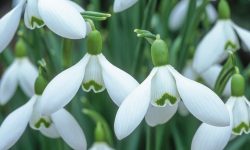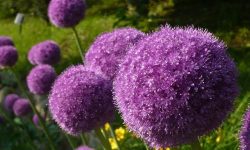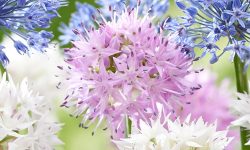Introduction
Every spring, Japan transforms into a wonderland of delicate pink petals and fragrant breezes. The cherry blossom, or “sakura,” is more than just a flower in Japan—it’s a symbol of renewal, beauty, and the fleeting nature of life. This ephemeral bloom has captivated people across the globe, drawing millions of visitors each year to witness its stunning arrival. Experiencing cherry blossom season in Japan is often described as a once-in-a-lifetime opportunity because of its fleeting nature and profound cultural significance. This article explores why witnessing the cherry blossom in Japan should be on everyone’s travel bucket list.
The Beauty and Ephemeral Nature of Sakura

A Delicate Masterpiece
The Japanese cherry blossom is a vision of pure elegance. Its soft pink and white petals flutter gracefully in the breeze, creating a serene atmosphere that blankets the nation in subtle hues of spring. Streets become floral tunnels, parks turn into oceans of bloom, and ancient temples are framed in soft, transient beauty. This transformation turns the entire country into a living canvas of seasonal art.
The timing of the blossoms adds to their charm. Lasting only a week or two at their peak, cherry blossoms are famously short-lived. Their transient presence is part of what makes them so deeply cherished. Each bloom becomes a fleeting gift, a moment of perfection destined to vanish.
The Philosophy of Impermanence
In Japanese culture, cherry blossoms embody the philosophy of “mono no aware,” a term that conveys a wistful awareness of the impermanence of things. Watching petals fall from the trees is a reminder of the cycle of life and death, beauty and decay. The blossoms appear in their prime for only a few days, inviting viewers to reflect on the fragile nature of existence.
Artists and poets have long been inspired by this symbolism. Classical Japanese literature is filled with references to sakura, not just for their visual beauty, but for what they represent: the ephemeral joy of living. This deep cultural resonance is what sets the cherry blossom apart from other seasonal attractions.
Cultural Significance of Cherry Blossoms
Hanami: More Than Just Flower Viewing
Hanami, meaning “flower viewing,” is a beloved Japanese tradition that dates back over a thousand years. It is far more than a visual experience. During hanami season, people gather with friends, family, and coworkers beneath blooming cherry trees to share food, drinks, music, and stories. Parks and public spaces are filled with laughter, music, and the rustling of petals.
The practice originated in the imperial courts of ancient Kyoto, where noble families would compose poetry and enjoy seasonal delicacies under the blossoms. Over time, hanami evolved into a nationwide custom, accessible to everyone from children to the elderly. Today, it is a celebration of both nature and community, bringing people together in a shared moment of beauty.
Historical and Literary Connections
Cherry blossoms hold a revered place in Japanese history and literature. The samurai class embraced the sakura as a symbol of the warrior’s way—glorious yet brief, like the bloom of the flower. This notion resonated deeply in a culture that valued discipline, honor, and self-sacrifice.
Many famous poems and artworks capture the spirit of the cherry blossom. The haiku form, known for its brevity and elegance, often features sakura as a central image. Throughout centuries, Japanese artists have depicted cherry blossoms in scrolls, woodblock prints, and ceramics, preserving the fleeting bloom in permanent form.
The Best Time and Places to Witness the Magic
Seasonal Timing and Weather Factors
Planning a trip to see cherry blossoms in Japan requires precision. The bloom starts in the south, in Okinawa, as early as late January, and moves northward, reaching Tokyo and Kyoto around late March to early April. By early May, the northern island of Hokkaido sees its own blossoming season.
Weather plays a crucial role in predicting bloom dates. A sudden cold spell can delay the opening, while a warm front might cause early blossoming. Because of this variability, many travelers follow the “sakura front,” adjusting their itinerary to match bloom predictions. Japan’s Meteorological Agency and various travel websites provide up-to-date forecasts that help visitors plan their hanami experience.
Iconic Cherry Blossom Destinations
Among the many locations across Japan, several spots have become renowned for their breathtaking cherry blossom displays. In Tokyo, Ueno Park offers a festive atmosphere with thousands of cherry trees lining walkways and ponds. Shinjuku Gyoen provides a more tranquil setting with manicured gardens and spacious lawns, ideal for quiet contemplation.
In Kyoto, the Philosopher’s Path follows a serene canal flanked by hundreds of blooming trees. This walk is especially romantic at dawn or dusk. The Kiyomizu-dera temple, perched on a hillside, offers panoramic views of cherry blossoms and the historic city below. Further south in Osaka, the grounds of Osaka Castle become a pink and white spectacle, with blooms mirrored in the castle’s moats.
For those seeking less crowded experiences, Hirosaki Castle in Aomori features stunning reflections of blossoms on its water-filled moats, while Mount Yoshino in Nara boasts over 30,000 cherry trees cascading down its slopes.
The Spirit of Celebration During Sakura Season
Seasonal Cuisine and Local Traditions
Cherry blossom season is not just visual; it is also culinary. Across Japan, spring foods and drinks are infused with sakura flavor and symbolism. Sakura mochi, a pink rice cake wrapped in pickled cherry leaf, is a seasonal favorite. Cafes serve sakura lattes and desserts, blending floral notes with Japanese and Western confections.
Sakura-themed bento boxes are carefully prepared with seasonal ingredients like bamboo shoots, mountain vegetables, and cherry-blossom shaped garnishes. Food becomes part of the visual experience, enhancing the hanami atmosphere with colors and flavors that match the surrounding trees.
Festivals often accompany the blooming season. Lantern-lit nights create a magical ambiance for yozakura, or night-time flower viewing. Temples and shrines host tea ceremonies under the blossoms, while local performers showcase traditional dances and music. This cultural immersion adds layers of meaning to what might otherwise be a simple sightseeing activity.
Artistic and Emotional Impressions
Artists and photographers flock to Japan during cherry blossom season, capturing the ethereal beauty of the landscape. The interplay of light, color, and motion—with petals drifting in the breeze—offers endless inspiration. Whether you’re a professional or an amateur, the sakura provides a canvas of natural splendor.
Emotionally, the experience resonates deeply. Visitors often report feelings of joy, peace, and reflection. The brief bloom encourages mindfulness, a pause in daily routines to appreciate the here and now. Shared smiles among strangers, spontaneous picnics, and the sheer wonder of nature in bloom combine to create lasting memories.
Preparing for a Life-Changing Journey
Travel Tips and Recommendations
Given the global popularity of cherry blossom season, early planning is essential. Flights to major Japanese cities such as Tokyo, Osaka, and Kyoto tend to fill quickly, with prices rising as the season approaches. Booking accommodations several months in advance is highly recommended.
For transportation within Japan, the Japan Rail Pass is a convenient and cost-effective way to explore the country. It allows unlimited travel on JR trains, including many high-speed options. Many cherry blossom destinations are accessible via train, making rail travel an integral part of the journey.
Clothing should be chosen for comfort and variability. Spring temperatures range from chilly mornings to mild afternoons. Layered outfits, water-resistant shoes, and a foldable umbrella will ensure you’re prepared for changing conditions. A lightweight picnic blanket and reusable container also come in handy for spontaneous hanami gatherings.
Respecting Local Customs
Participating in hanami comes with unspoken rules. Cleanliness is paramount, so travelers should carry trash bags and leave no trace behind. Noise levels should be kept moderate, especially in residential or sacred areas. It’s customary to arrive early to secure a good spot, and many locals reserve space using tarps with their names written on them.
Being mindful of others enhances the collective experience. Simple gestures like thanking park staff, sharing food, or helping clean up contribute to the communal spirit that defines hanami. Travelers who engage respectfully find themselves welcomed into the tradition rather than simply observing it.
The Deeper Meaning Behind the Blossoms
A Universal Connection
While cherry blossoms are distinctly Japanese in their cultural roots, the emotions they evoke are universal. They speak to the human experience of beauty, transience, and the passage of time. Regardless of nationality or background, visitors often find personal meaning in the sakura’s short but brilliant display.
The act of gathering under a tree, sharing food and stories, and marveling at natural beauty connects us across cultures. It reminds us that some of the most profound moments in life are simple, shared, and unplanned.
Inspiration Beyond Travel
The memory of cherry blossoms often lingers long after the journey ends. For some, it sparks a renewed interest in nature or Japanese culture. For others, it becomes a metaphor for embracing change, appreciating fleeting joy, or finding beauty in imperfection.
Many travelers return home with a new sense of awareness and gratitude. They carry with them not only photos and souvenirs, but also a deeper understanding of time, connection, and presence. In this way, the cherry blossom experience extends far beyond the days spent in Japan.
What is the best time to see cherry blossoms in Japan?
The cherry blossom season typically begins in late March and peaks in early April in most parts of Japan, such as Tokyo, Kyoto, and Osaka. However, the exact timing varies each year depending on the weather. In southern areas like Okinawa, blooms can start as early as mid-January, while northern regions like Hokkaido experience peak bloom in late April to early May.
How long do cherry blossoms stay in full bloom?
Cherry blossoms stay in full bloom for about 5 to 7 days once they reach their peak. The entire blooming period, from the first bloom to petal fall, usually lasts around two weeks. However, heavy rain or strong wind can shorten this period significantly.
What is hanami, and why is it important?
Hanami is the traditional Japanese custom of enjoying the beauty of cherry blossoms. It often involves gathering with family and friends under the blooming trees for picnics, music, and celebration. Hanami holds cultural significance in Japan as it reflects the appreciation of nature’s fleeting beauty, a concept deeply rooted in Japanese aesthetics and philosophy.
Where are the best places to see cherry blossoms in Japan?
Some of the most iconic spots include Ueno Park and Chidorigafuchi in Tokyo, the Philosopher’s Path and Maruyama Park in Kyoto, Osaka Castle Park, and Hirosaki Castle in Aomori. Each region offers a unique experience, whether it’s night-time viewing, historical scenery, or reflections along rivers and moats.
Do I need to book hotels in advance during cherry blossom season?
Yes, cherry blossom season is one of the busiest travel periods in Japan. It is strongly recommended to book your accommodations several months in advance, especially in popular cities like Tokyo and Kyoto. Prices tend to be higher during this peak time, and availability is limited.
Can I see cherry blossoms outside of Tokyo and Kyoto?
Absolutely. Cherry blossoms can be seen all across Japan. For a more local and tranquil experience, you can visit smaller towns and rural areas such as Takayama, Kanazawa, or even the Japanese Alps. These places often offer stunning views with fewer crowds.
What should I wear during cherry blossom season?
The weather during cherry blossom season can be cool and variable. It’s best to dress in layers. A light coat, a scarf, and comfortable walking shoes are essential. Early mornings and evenings may be chilly, so having a warm outer layer is advisable.
Is there a difference between day and night cherry blossom viewing?
Yes, and both are worth experiencing. Daytime hanami allows you to enjoy picnics and the full beauty of the blossoms under sunlight. Night-time viewing, called “yozakura,” often includes illuminated trees in parks and along rivers, creating a magical and romantic atmosphere.
What cultural etiquette should I follow during hanami?
Respect for others and the environment is important. Do not shake the trees or pick flowers. Always clean up after yourself and dispose of garbage properly. If you’re joining a group hanami, it’s polite to share food and drink, and thank the host or organizer.
Is it worth traveling to Japan just for cherry blossom season?
Yes, many travelers believe that cherry blossom season is the most beautiful time to visit Japan. It offers a rare combination of cultural traditions, seasonal food, scenic landscapes, and social festivities that are difficult to experience elsewhere. For many, it becomes a once-in-a-lifetime memory.
Conclusion
The Japanese cherry blossom season is a multifaceted experience that blends natural beauty, cultural tradition, and emotional depth. From its visual splendor to its philosophical resonance, sakura captures something essential about the human experience. It invites us to celebrate the moment, connect with others, and appreciate the fleeting wonders of life.
For those who seek more than just another destination, the cherry blossoms of Japan offer a journey of the heart and spirit. It is not merely a travel highlight but a transformative event—one that stays with you long after the petals fall. That is why witnessing the Japan cherry blossom is truly a must-see once in a lifetime.






